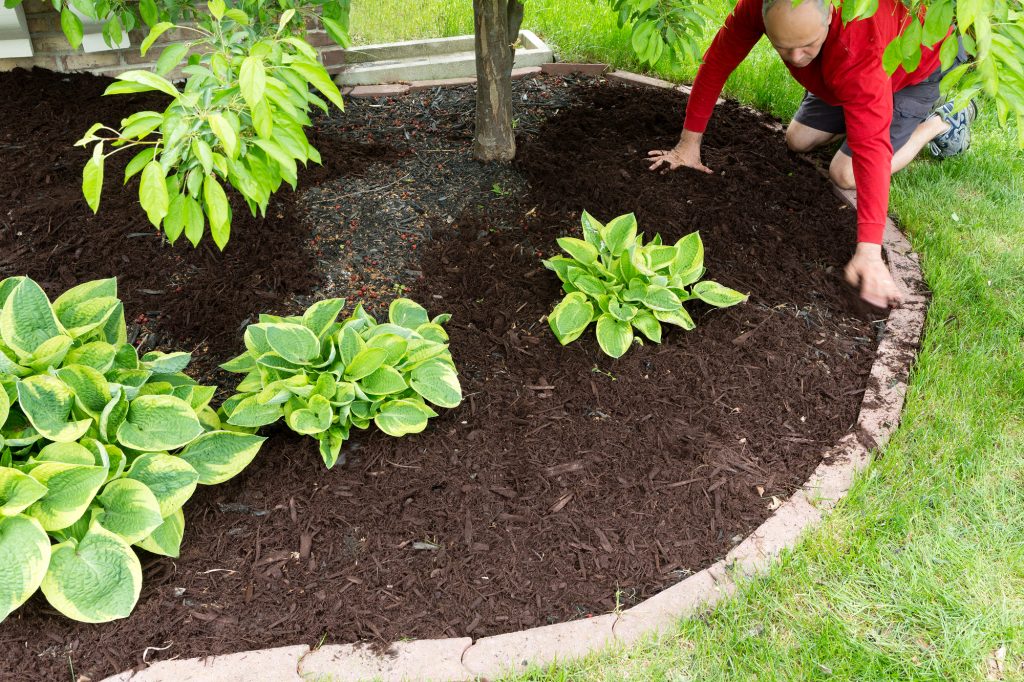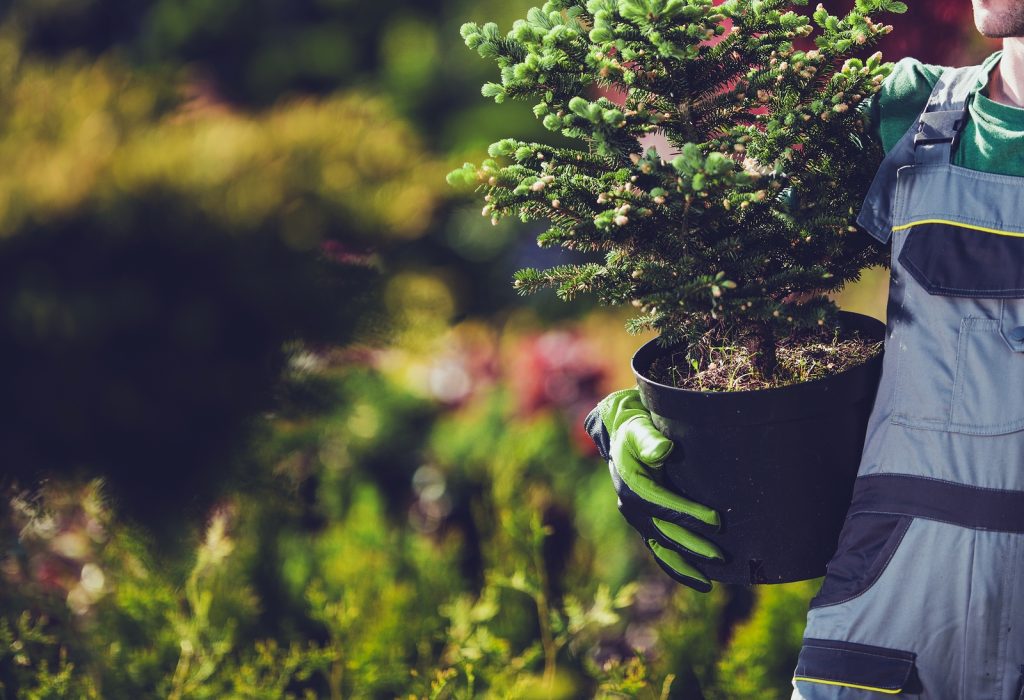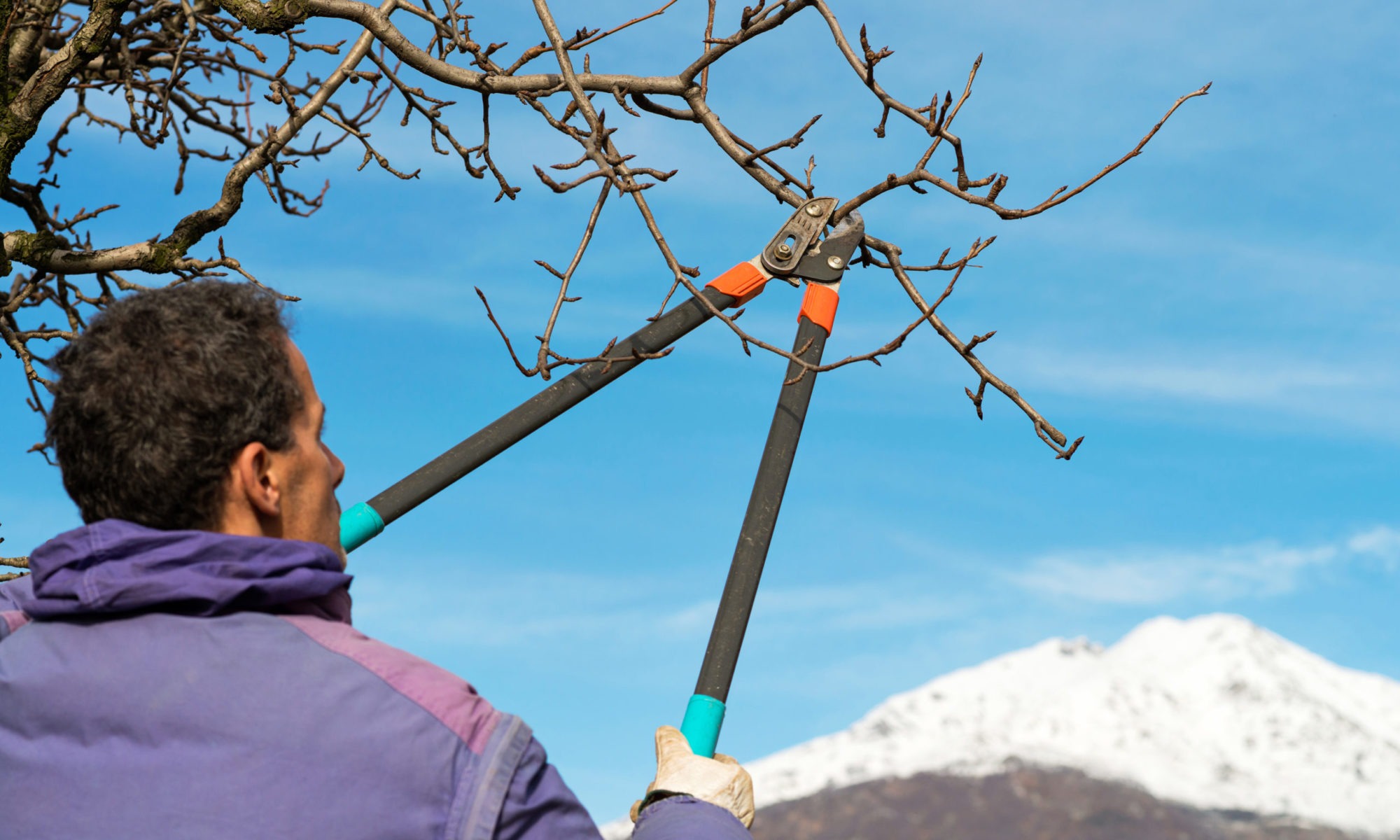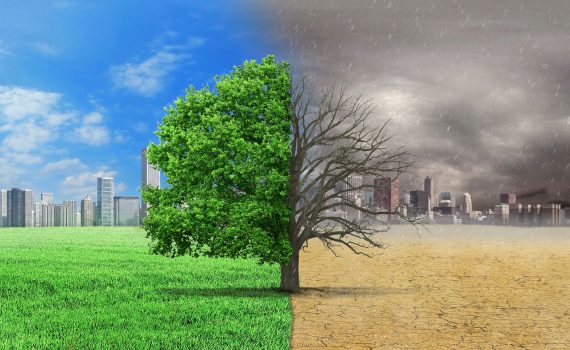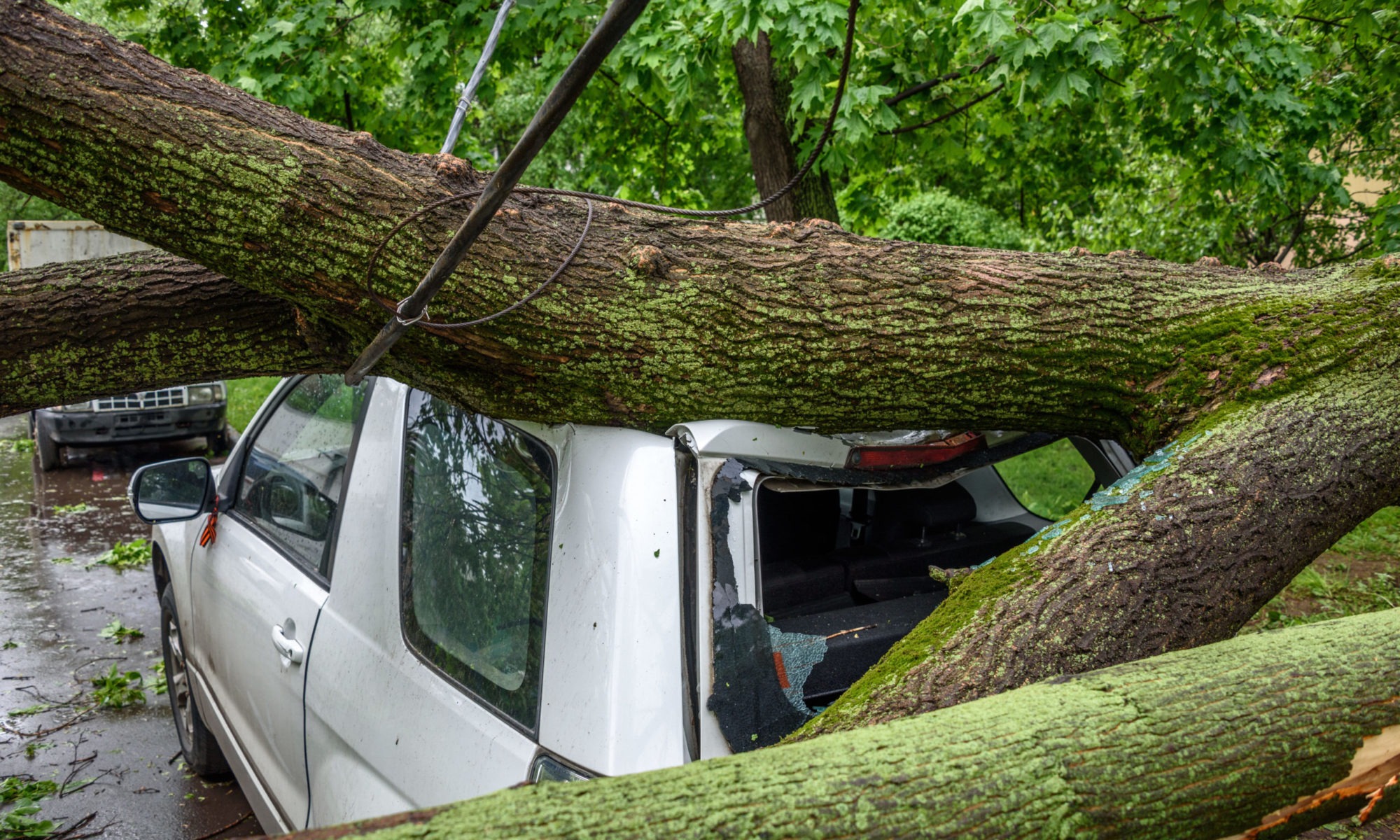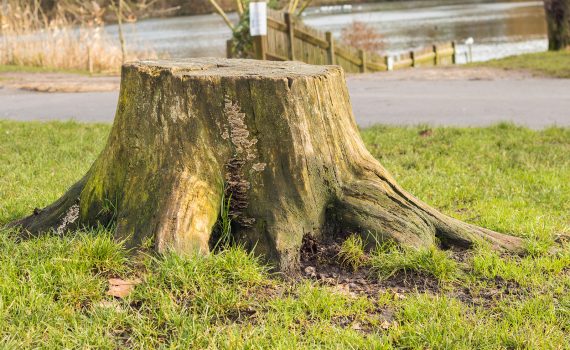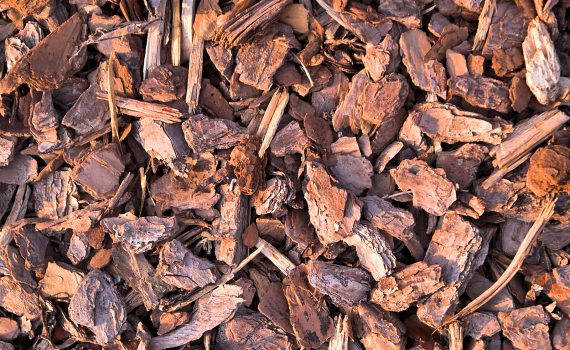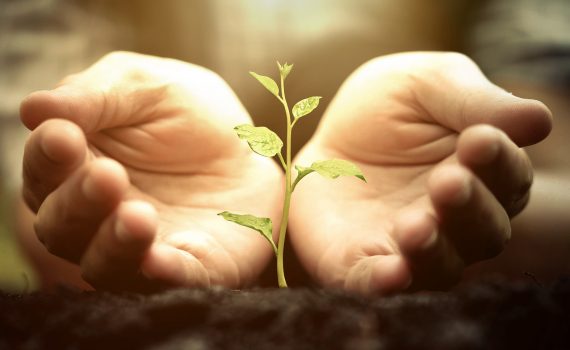[embedyt] https://www.youtube.com/watch?v=lx-6V5IWv-A[/embedyt]
Spring Mulching
Spring is starting in two weeks and besides spring cleaning, many of us start focusing on our yards. Mulching is the key thing to do for your landscaping. It can help with your trees and plant health if applied properly. However, if you do too much, then it could negatively impact things. Spring is the best time to start mulching. So what is the proper way to mulch?
1. Choose your Mulch Carefully
Mulch is not as simple as throwing some wood chips in an area. It also is not a matter of picking the one that looks best. You want it to bring the proper minerals to your soil while also retaining moisture, protecting your landscaping, and keeping those nasty weeds away.
Organic mulch is generally best for most trees and bushes. The living matter in them can provide valuable ingredients to your soil as it decomposes. Several varieties exist and you can usually find some at your local gardening place or through online stores like Diablo Mulch.
There are some other, more common mulch varieties may save you some money but you need to make sure you keep some things in mind. For instance, you could use cut grass but you need to let it dry out before placing it or you’ll end up damaging your soil.
2. Quantity
While in many things in life, more is better, this isn’t the case with wood chips. The best quantity for trees is about 2-3 inches deep with between 3-10 feet around the base of a tree. As the wood chips decompose, you may need to add an inch each year to keep the aesthetics.
3. Proper Mulching Technique
Think about when you’ve gone hiking and how the ground looks around trees. If you recall, it is covered with leaves, wood particles, and other organic items. This is the same fashion in which mulch should be placed.
4. Preparation
Prior to mulching in the Spring, you want to get the area around trees prepared to apply the wood chips. A good rule of thumb is to remove the grass and other items from within the 3 to 10 feet around the tree in which you’ll apply the mulch. This will ensure that the mulch will keep the right amount of moisture in while providing proper drainage.
Upon clearing the area, the next step we recommend is getting some compost and placing some in the impacted area. You should then water this area and then apply the wood chips. This will provide your tree with adequate water with the wood chip keeping it in.
A quick word of caution, do not use mulch within about a foot of any structural foundation. This is to limit the likelihood of creating an environment for termites to crop up.
Mulch provides an essential element for your trees. Should you have questions about mulching or other tree care for your East Bay home, contact Sexy Trees certified arborist at 925.233.6877.
What Should You Ask a Tree Care Specialist?
Many of us either ignore our trees, do some self-tree care, or simply ask the gardener to do the tree service. Is this best way? Usually these are not the right approaches to ensuring your trees thrive. The following are some key things to ask you Tree Care Specialist:
-
Please give me your experience level
When speaking to tree care specialist, their experience level is critical. They may have seen many situations and been around various tree scenarios. Among their experiences should be becoming a certified arborist. Certified Arborists go through extensive testing to ensure they are familiar with the nuances of caring for trees. Sometimes the difference between a healthy tree and a sick one could be hard to identify differences in how it was pruned or cared for.
-
What things should I do regularly to care for my tree?
Whether it’s watering, pruning, or adding supplements, caring for a tree is very individualized. Each tree will be getting a set of nutrients from the soil, but it does have other needs. An oak tree will have different needs than a peach tree, and those will also vary according to terrain and climate. Each has to be cared for appropriately to ensure maximum health. Get specific recommendations about level of watering, sunlight, etc. A certified arborist has this knowledge to evaluate the tree and make quality recommendations.
-
What is your approach to pruning a tree and why?
As you are speaking with a tree care specialist, some will recommend some pruning or even tree removal. Always ask the essential question of “why?”. If they give you a very generic answer, it’s important to follow up and ask again for the basis of their recommendation. Hacking a tree shorter or removing it without a true need could permanently damage this living being.
Sexy Trees has a certified arborist with years of experience. We do offer tree evaluations. If you have questions about planting trees, feel free to reach out at Sexytrees.com.
3 Tips for Winter Tree Care
As winter weather approaches, many of us look at trees as being “dead” without any work needed. Since the trees around the Bay Area have lost much of their foliage, it may feel like a sign to leave them alone. This couldn’t be further from the truth! Proper winter tree care is what helps the tree grow and become stronger for its spring growth.
Here are a few key tips for winter tree care this time of year:
Saving Rain Water
Whether we have a rainy season or drought conditions, it’s very important to try to maximize the amount of water that is preserved in the tree’s surrounding soil. There are a couple techniques that we recommend for Bay Area trees. First, get fresh mulch. This can help keep the water contained, captured, and embedded in the soil. Even an inch of mulch helps retain moisture. If you would like to also use the mulch for weed control, use about three inches of mulch.
Keeping the Bugs Away
While many pests stay away during this time of year, if you’ve had attacks from mites, scale, or aphids, then you should spray for them now. Use dormant oil to kill the eggs after the leaves drop. Another layer of protection is to spray for peach leaf curl or lime sulfur.
Winter Tree Care Pruning
Growth has to be monitored and may need controlled to prevent problems. It’s critical to cut back some trees in order to allow light to enter and hit the inner branches. Along with lightening heavily congested areas, you should also prune away diseased or dead areas of the tree so the nutrients will focus on the remaining portions of the tree. Sometimes you will also have to trim to maintain the balance of a tree, to prevent it from breaking.
By following the above winter tree care tips, you will find that you’ll have healthier, fuller trees in the spring and summer. If you have any questions, feel free to reach out to our Certified Arborists at Sexytrees.com
What Should You Do With A Fallen Tree?
Trees can fall due to adverse weather, damage or underlying disease or pest infestation. A fallen tree needs to be dealt with and removed to prevent wood rotting, spreading of tree diseases and pests as well as the negative aesthetic and safety effects. So what is the right thing to do with a fallen tree?
Analyze The Causes And Responsibility
If a tree has fallen in or near your property, it’s important to ascertain the cause of the fallen tree, as well as who is responsible for its removal. Municipalities can offer aid in removal of trees that fall due to widespread cause or natural disasters. If a tree from the street or a park on public property falls in your yard, it will likely be the responsibility of local authorities to remove it.
However, if a tree rots or becomes diseased on your own property, it will be your responsibility to remove it or pay for it to be removed. If the cause of the fallen tree is disease or pest infestation, it’s advisable to remove the tree rapidly to prevent cross-infection with other trees.
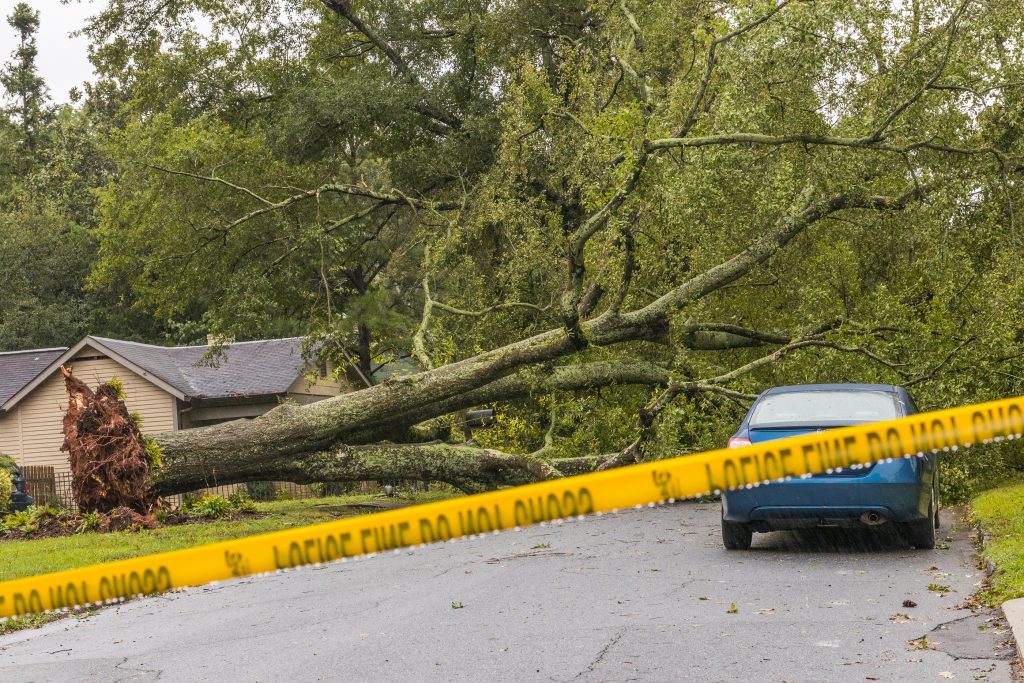
Can You Use The Tree?
When a tree falls, the wood is often able to be recycled and used for some purpose, including firewood, mulch, landscaping or lumber. It’s important for you or an arborist to analyze the type of tree and wood as this can inform you as to its potential purpose. If the wood is damaged, it can still be used or sold as firewood or mulch (as long as it isn’t diseased). Quality wood can be turned into furniture or outdoor furniture, and valuable wood like mature walnut, cherry, redwood can be taken to a mill and cut into lumber.
Plan The Removal
Once you know what you want to do with your fallen tree, you can plan the removal. The type and size of tree and the hardness of wood will influence how difficult this is. Most tree removals require chainsaw work and other heavy machinery, so it’s important that the operator has the knowledge and experience to use these tools, and proper insurance and coverage is in place. Otherwise, call an arborist for professional removal.
Keep Safety In Mind
Because the process of analyzing, sawing and removing a fallen tree can be so difficult, bringing in a skilled arborist for the job is recommended. This ensures that the work done on your fallen tree is safe and insured, and you can get the best use out of the fallen tree’s wood. A professional arborist can guide you through the process of identifying the tree’s type and condition as well as inspect it for disease or pests. Then they can safely cut and remove your fallen tree, recycling the wood for its best purpose.
While a fallen tree in or around your property can be a nuisance or a hazard, finding the right way to deal with a fallen tree can turn it into a positive. For expert advice to help you make the right decision, contact your local arborist for professional tree removal.
3 Causes for Dry and Brittle Trees
Dry trees can often drop branches and break leave tips easily, becoming a hazard during storms and strong winds. Most homeowners would prefer to have lush green trees in their yards to provide shade, however it’s not uncommon to find dry and brittle trees in your yard. But what are the main causes of dryness in trees? While sufficient water is an important factor it’s not the only cause contributing to dry and brittle trees.
Drought Stress
One of the most obvious and common causes for dry trees in California is drought stress. Drought stress can cause tree branches to become weak and fall easily, and also causes leaves to go brown and drop from the tree. Signs of drought stress also include slowed growth, a thinning canopy, and dying twigs high in the branches. The signs of drought stress are not necessarily obvious, and once the characteristic signs begin to show themselves it maybe too late to rescue the tree. Drought stress can eventually destroy your trees, leading to the need for tree removal.
Drought stress can be avoided by limiting pruning during drought times, avoiding using fertilizer, and applying organic mulch around the root system instead. When watering trees during dry or hot seasons, soak the roots less often rather than watering shallowly more often. If you need to prune trees call a qualified arborist to provide expert service to protect your trees and keep them healthy.
Over-Fertilization
Trees that grow rapidly are not as strong as those with slow, steady growth. Avoiding fast growing tree types can help to avoid dry and brittle trees, especially if your garden is going through difficult conditions such as a drought. Trees can also grow too fast if they’re supplied with too much fertilizer.
Fertilizer can ‘fast track’ growth without the tree being able to support the new growth with adequate nutrients or water. While fertilizer seems like a great way to ‘feed’ trees, it’s better to take a slower, more natural approach, and have an arborist apply mulch. Avoid fertilizing trees that are already dry or brittle, under drought stress or suffering from insect infestations or disease.
Pest Infestations and Diseases
Various pest infestations and tree diseases can cause trees to become weak, leaves and branch tips to become brown, and bark to go dry and fall off. The symptoms vary depending on the particular disease or infestation affecting the tree. If you notice your tree undergoing any unusual changes or you see visible signs of disease or pests on your tree, it’s important to call your local arborist as soon as possible. They can diagnose the specific condition affecting your tree and treat it in order to save the tree and prevent the condition spreading.
Dry and brittle trees could signify an underlying condition affecting your trees. If you notice dry and brittle trees, it’s important to act fast to prevent tree death or damage to your garden or property. Call a professional arborist as soon as possible to help get your trees back to full health.
4 Signs Your Tree Needs Cabling And Bracing
The trees in your garden are living entities and need attention and care in order to flourish. In some cases, trees need first aid and even ‘surgery’ to help maintain their health and structure. Cabling and bracing is a technique that can be applied by a skilled arborist to help support your trees branches and trunks. This can extend a tree’s life if done correctly, allowing your trees to flourish for longer. Here we look at 4 signs that your tree needs expert attention from a qualified arborist with professional cabling and bracing.
- Leaning Trees
Trees that are dead or dying tend to lean, however a leaning tree doesn’t always signify a problem. Cabling and bracing can’t be used to save diseased or dying trees, but it can help to provide structure and support to trees that are weak, but healthy. Trees may normally have a slight lean to them. A skilled arborist can inspect your trees and assess whether they are leaning normally, or whether there are adverse underlying causes. A tree’s root system can grow to accommodate and calibrate a lean, but in some cases cabling and bracing may be needed to support the tree to prevent cracking and hazardous tree falls.
- Cracks in the Trunk or Branches
Cracks in the tree trunks and branches can be a sign that your tree is becoming unbalanced and overburdened. Cracking or splitting in the trunk of your tree can represent a particularly serious structural issue, and you should enlist the assistance of a professional arborist as soon as possible. In some cases, cabling and bracing can be applied to help strengthen and reinforce your tree when the problem is caught early to prevent cracks deepening and causing split trunks. Cracked branches may not be worth trying to recover, but it’s important to remove them to avoid potentially dangerous falling branches.
- Multiple Trunks
It’s not uncommon for trees to split at the trunk, with the two trunks diverging in a V shape. This can be called co-dominant stems or V-crotch trunks. As the tree grows, these multiple trunks can form a weak spot, as one trunk becomes larger than the other and threatens to topple the tree. Cabling and bracing can help to strengthen divergent trunks so they don’t split too far apart and cause breakage. However, in some cases one of the trunks may need to be removed by your arborist to preserve the tree.
- You’re Due For Adverse Weather
Storms, rain and strong winds can really put on a strain on your trees and worsen any structural issues you may already be experiencing. If you’re expecting adverse weather, have your trees inspected and fitted with cables and bracing if necessary to protect against the harsh conditions. Professional cabling and bracing from a skilled arborist can help to keep your trees and branches safe during harsh weather, adding extra strength and reinforcement while also allowing flexibility, to keep your branches intact.
Cabling and bracing can be a useful tool to protect and preserve your trees when implemented safely by a professional arborist. Talk to us about your tree’s needs and whether cabling and bracing is right for your trees.
Our tree experts service the following areas: Walnut Creek, Concord, Pleasant Hill, Lafayette, Orinda, Oakland, Albany, Alhambra Valley, Alamo, Berkeley, Danville, Diablo, El Cerrito, El Sobrante, Hercules, Kensington, Sunol, Saranap, San Pablo, Reliez Valley, Piedmont, Port Costa, San Leandro, Vine Hill, Martinez, Benicia, Fairfield
This is Why You Need To Remove Old Tree Stumps From Your Garden
You might think that there’s no harm in keeping that old tree stump in your yard. Old tree stumps can be ignored, and you think it’s not worth the trouble of having it ground down or removed. But there are several reasons why you should consider removing tree stumps as soon as possible, for the sake of your garden’s appearance, safety and health. Here are 5 reasons why you need to remove old tree stumps from your garden now.
- Stumps Can Be Dangerous
Tree stumps in your garden are obstructions that can be difficult to see. Leaving tree stumps on your lawn can create a trip hazard for your family members, friends and visitors. If someone injures themselves on your property, you may be liable for damage and injuries. Stumps can also be a hazard when you are mowing your lawn, causing damage or accidents with your lawnmower.
- Tree Stumps Can Resprout
Tree stumps are left behind when you cut down trees that need to be removed. But if you leave the tree stump in your garden, you may end up with the same problem you started with. Tree stumps can re-sprout with many small trees, leaving you with unsightly, uncontrolled growth. Tree sprouts can be hard to stop as they will continue to grow back while the root system remains. Tre stumps can also be reservoirs for tree disease or pests. Professional stump removal helps to prevent trees re-sprouting or infecting other trees in your garden.
- Tree Stumps Attract Pests
Old tree stumps sitting in your yard can be a haven for vermin, termites and other pests. Rotting wood attracts wood boring insects, and can provide a nesting spot for other pests as well. Once these pests have gained a foothold in your garden they can infect other plants and trees, and surrounding structures, including your home. Removing tree stumps promptly avoids attracting these pests and keeps your home and garden safe.
- Stumps Can Be Unsightly
With no fruits, foliage or any kind of redeeming feature, most tree stumps are unattractive and unsightly. Unkempt tree stumps can detract from the appearance of your garden, and make your outdoor environments unattractive and unappealing.
- Tree Stumps Interfere With Your Garden
Unwanted old tree stumps and their roots take up space in your garden that could be put to better use. If your tree stumps start to re-sprout, they could draw precious nutrients and water from your soil, taking these away from your other plants. Generally, old tree stumps don’t add anything to a landscape, so wherever possible, have your tree stumps professionally removed so you can enjoy more space in your garden.
Keep your garden safe, healthy and pest-free by having tree stumps promptly ground and removed after you have a tree cut down. A professional arborist can provide safe and economical tree stump removal to provide more space for your garden to flourish and thrive.
Bark Mulch or Rock Mulch: Which is Better for Garden Beds?
Mulch is great for gardens, helping to retain moisture, protect plants and adding a decorative finish to your beds. Mulch can greatly improve the condition of your garden, replenish the soil and keep your garden neat and maintained. But when it comes to mulching your garden, wood mulch is not the only option. There are many choices of material for mulch, but two of the most common and popular are bark or wood mulch and rock mulch. Both of these mulch types perform the essential functions of retaining moisture in soil and keeping the soil insulated. Here we look at the difference between these two mulch types and which is better for your garden beds.
Bark or Wood Mulch
Bark and wood mulch are organic mulch types that are made from shredded bark or wood. Wood and bark mulch are naturally brown or black, however they can be dyed a variety of colors to match your tastes. Bark and wood mulches are available from professional arborists, who obtain the mulch from healthy trees. Natural wood or bark mulch has an appearance like wood chips or small pieces of bark. It also releases a natural earthy smell when placed on your garden.
One of the most significant and distinctive benefits of wood and bark mulch is that it decomposes and adds nutrients and nitrogen to your soil. Wood and bark mulch is also inexpensive, has a more natural appearance, and looks great in every garden bed. Wood and bark mulch effectively form a preventative barrier against weed growth and help avoid the need for edging material. Wood and bark mulch are also relatively soft and make it easy to garden even with the mulch covering.
However, there are also some disadvantages of wood and bark mulch. One of the most significant disadvantages is that wood and bark mulch needs to be replaced every 1 to 2 years as the mulch breaks down or is washed away. The vibrant color of wood and bark mulch can also fade in sunlight. Wood and bark mulch can potentially draw in pests and insects attracted to the small, broken pieces of wood.
Rock Mulch
Rock mulch offers a polished and flawless coverage for your garden beds. Rock mulch consists of any type of stones or gravel used to provide cover and protection for garden beds. The size of the rocks can range from very small to as large as a fist, and rock mulch is available in a variety of colors.
One of the greatest benefits of rock mulch is that it does not need to be replaced as often as wood and bark mulch. Rock mulch is hardy and won’t wash away or decompose. Rock mulch can also be ideal for sloped gardens as it holds its position well.
Rock mulch is much more expensive than wood and bark mulch, but it also lasts longer. While rock mulch doesn’t decompose, it may wear thin overtime, and you will need to find the same rock type and color to replace your coverage. One of the disadvantages of rock mulch is that weeds can grow through the gaps in the rock especially if organic matter and debris is allowed to collect on the surface of the rock mulch. Rock mulch is also heavy and difficult to remove if you change your mind or decide to add or take away plants from your garden.
Which Is The Best Choice For You?
Choosing the right mulch type for your garden beds depends on the type of plants you have and the look you’re going for. For plants that need extra nourishment, stable soil temperatures, and potentially moving or replanting, wood or bark mulch is best. if your plants can withstand higher soil temperatures and require less nutrients and nitrogen in the soil, rock mulch may be the best choice for you.
Having a local arborist inspect and analyze your garden bed and plants can help you identify the right mulch choice for you .
5 Essential Steps for Spring Tree Care
Spring is the time for new life, new growth and regeneration. And nowhere is that truer than in your garden. Spring is the perfect time to get to work on creating a better outdoor environment, cleaning up after winter and planning for the summer ahead. Tree care and garden maintenance during Spring is essential to prepare your trees for healthy new growth and resistance to pests and diseases. Here we look at 5 steps for essential tree care during spring.
Boost New Growth
Spring is the time that your trees and plants want to burst forth with fresh new growth, and proper tree care can help to encourage this new growth. Facilitating new growth means working on an inclusive approach to garden care, as well as mulching and watering your garden to nourish the roots. Mulch helps the soil warm up and begins to regenerate nutrients and minerals after the long cold of winter. Watering the soil also helps to encourage new growth so that your trees have enough nutrition and water to reach their full potential.
Garden Clean Up
Spring is the perfect opportunity to clean up your garden and refresh your outdoor space. Your garden ‘spring clean’ should involve clearing up any fallen fruit, branches, leaves, or debris to help your garden stay clean and thrive. A messy garden can contribute to the spread of disease, pests and fungus infections, so cleaning up your garden for Spring is essential.
Check For Disease and Pests
Because Spring is the season for new growth, it is also the time to check for latent disease and pest infestations. Check for any abnormalities on the trunk or branches of your tree and check the tops and undersides of any leaves on the tree. It can also be useful to check around the base of the tree for holes or any evidence of pest damage.
Plant New Trees
As the season for regeneration, Spring is the perfect time to plant new trees and shrubs. It might be helpful to talk with a qualified arborist regarding the right timing for planting, and the ideal placement of your new trees. This should take into account the projected growth pattern of your trees to ensure your space can accommodate and nurture your new trees.
Prepare For Spring Weather
Spring can also bring rain and storms that can challenge or damage your garden. Spring tree care should involve strengthening and reinforcing your trees by removing weak limbs. You can also get the assistance of a professional arborist to cable and brace any risky branches. You can also have your trees professionally pruned by an arborist if they are untidy or overgrown to prevent issues during storms.
A Spring garden clean is the perfect opportunity to provide your trees and shrubs with some much-needed care and maintenance, and to prepare them for the warmer weather. Contact your local arborist for professional assistance or advice to create a flourishing, healthy garden for spring.
 Bringing Sexy Back Into Your Yards
Bringing Sexy Back Into Your Yards 
